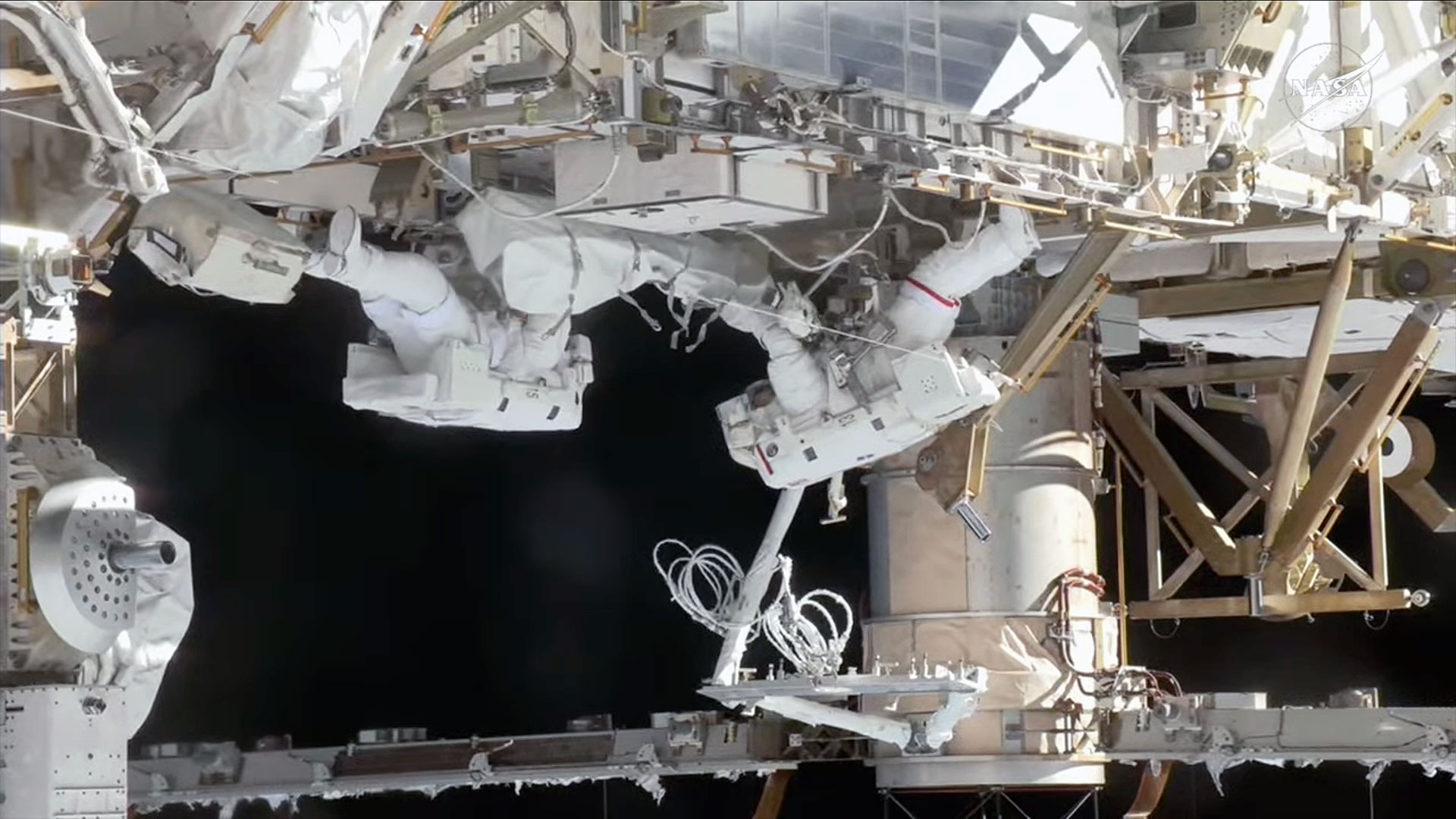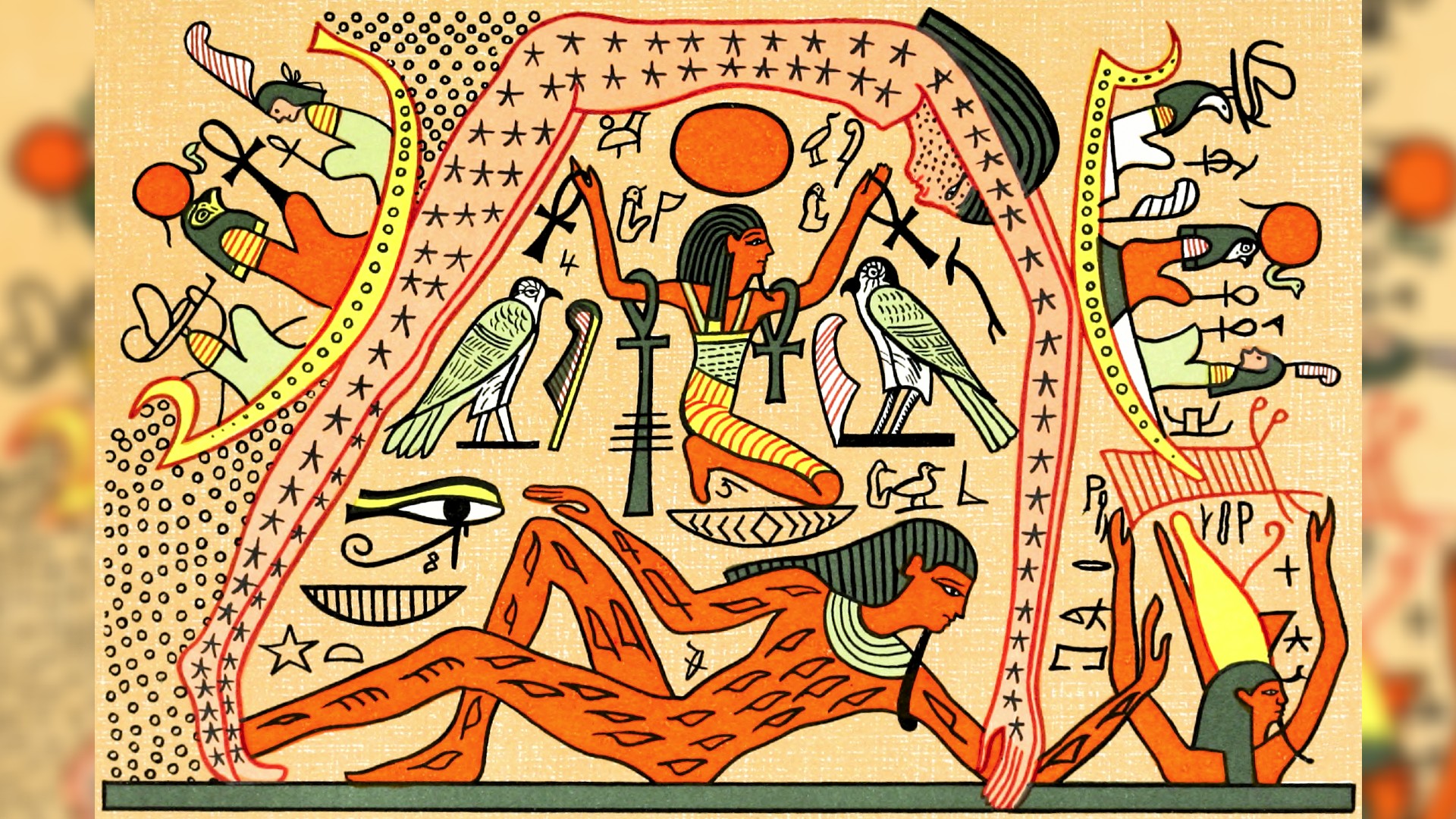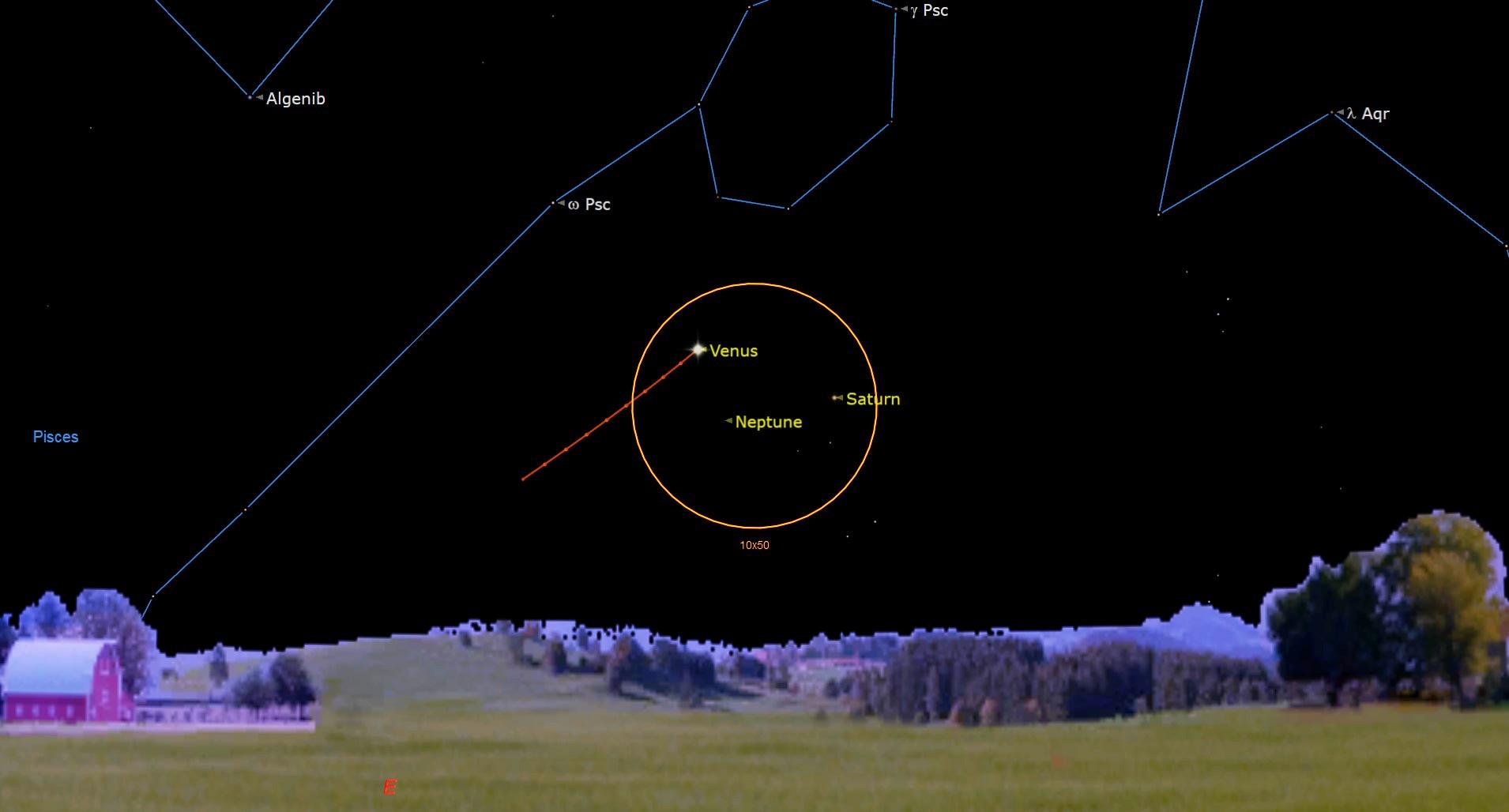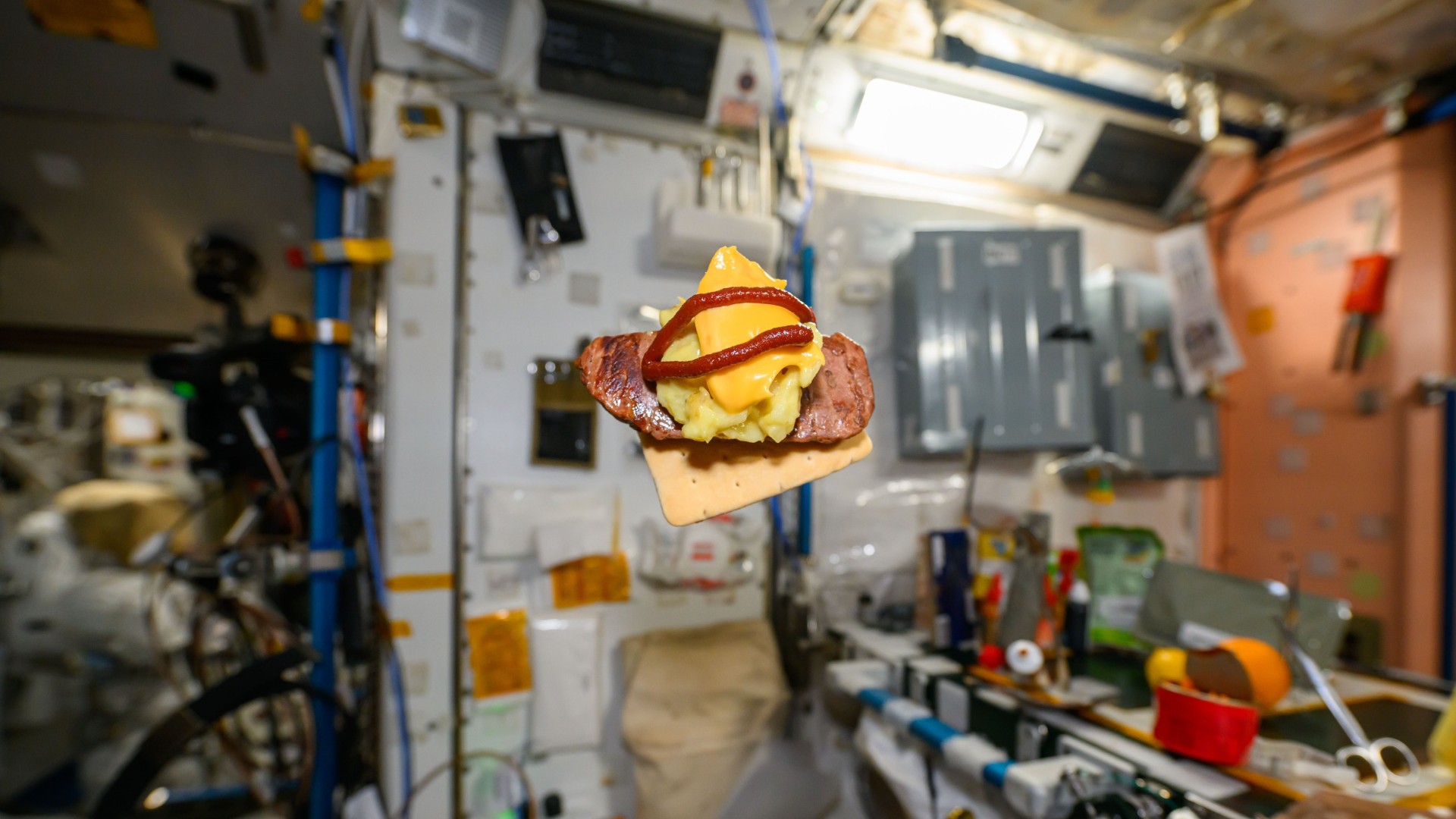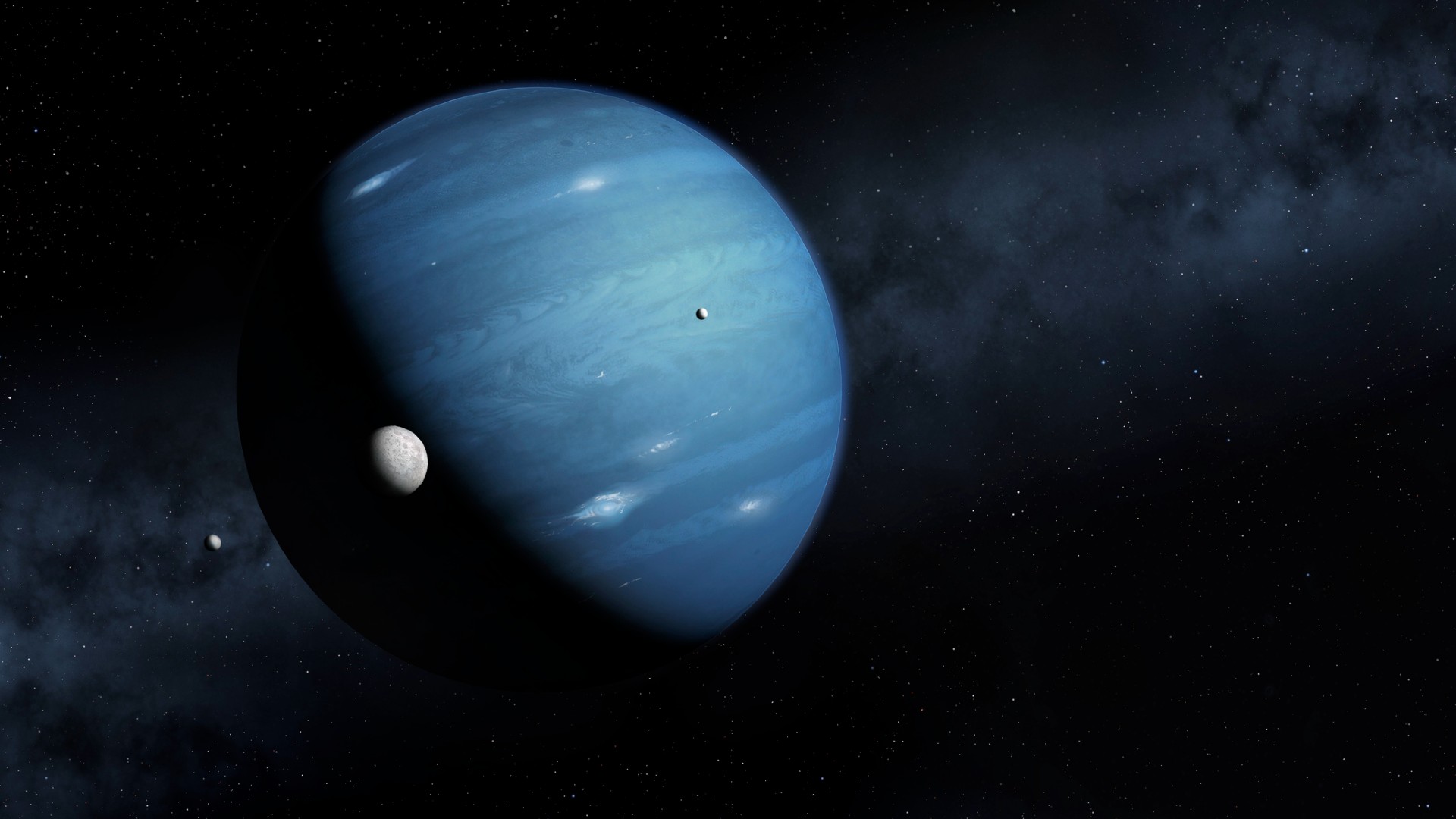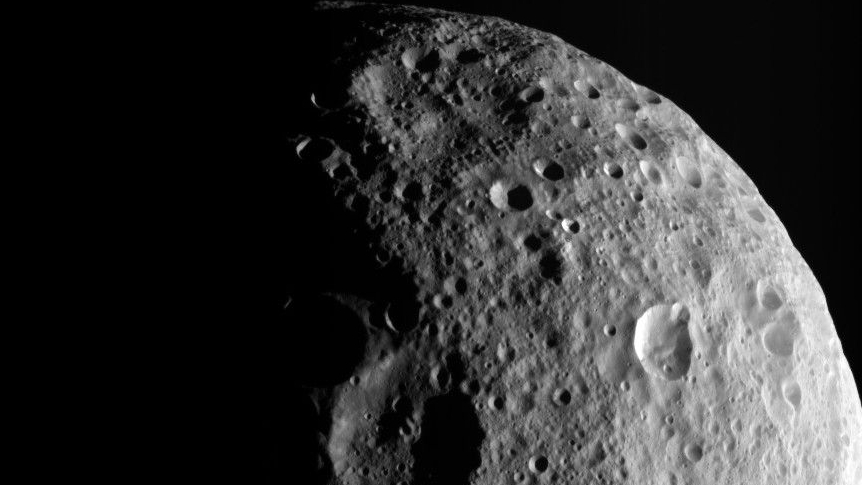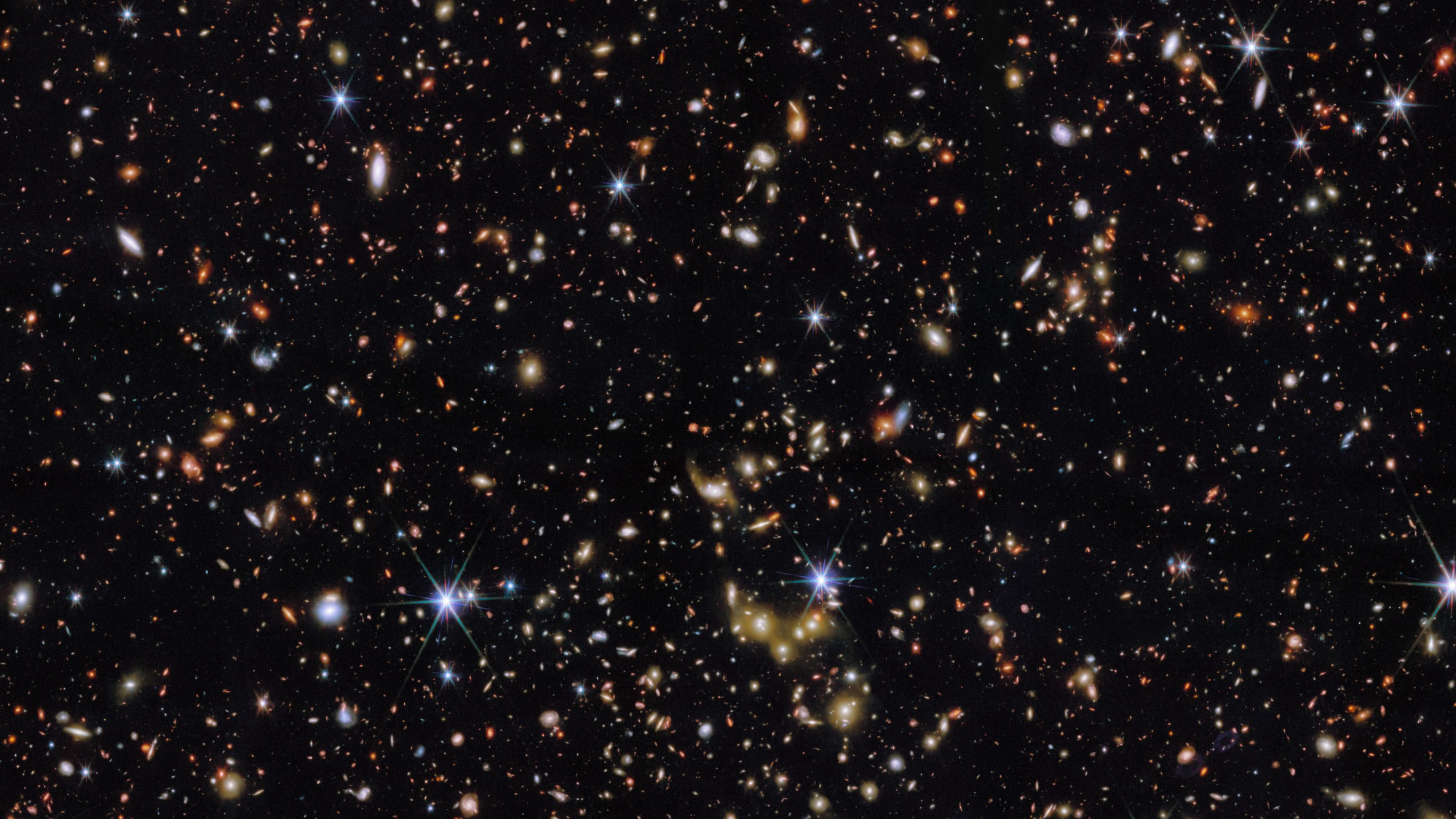See the rare 'planet parade' of 5 naked-eye planets in these photos by an astronomer
Clear skies beckoned Wednesday (Dec. 28) in Rome, allowing the Virtual Telescope Project's Gianluca Masi to get busy with a year-end broadcast.
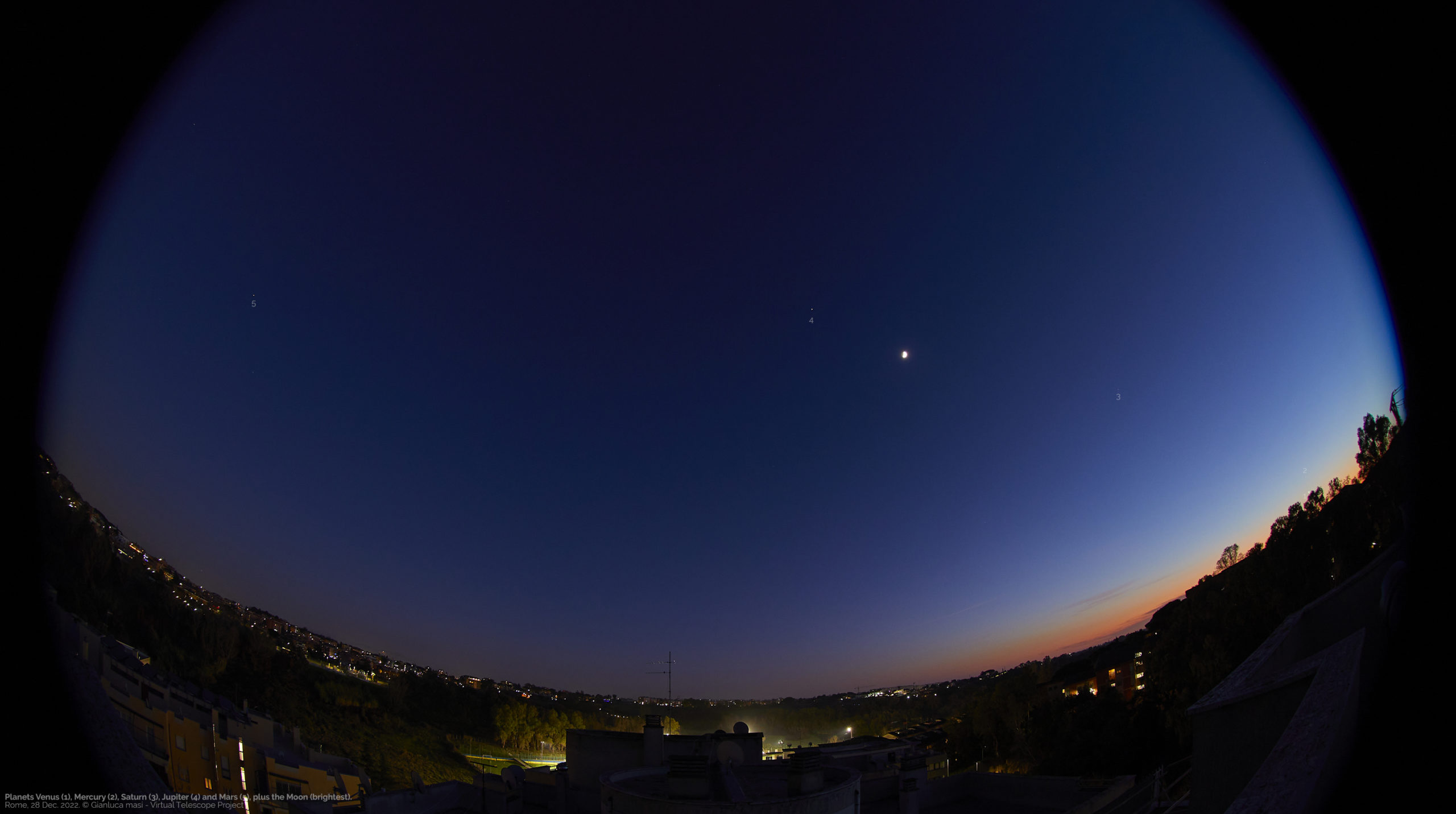
After days of clouds in Rome, the skies finally cleared for a "planet parade."
Virtual Telescope Project founder Gianluca Masi was at the ready with telescopes, cameras and broadcasting equipment to observe the five naked-eye planets on Wednesday evening (Dec. 28). The most-easily seen planets were Mercury, Venus, Mars, Jupiter and Saturn. He also spotted Uranus and Neptune, which require equipment to view.

Five naked-eye planets shine in the sky, marked by numbers: Venus (1), Mercury (2), Saturn (3), Jupiter (4) and Mars (5). The moon is the brightest light.
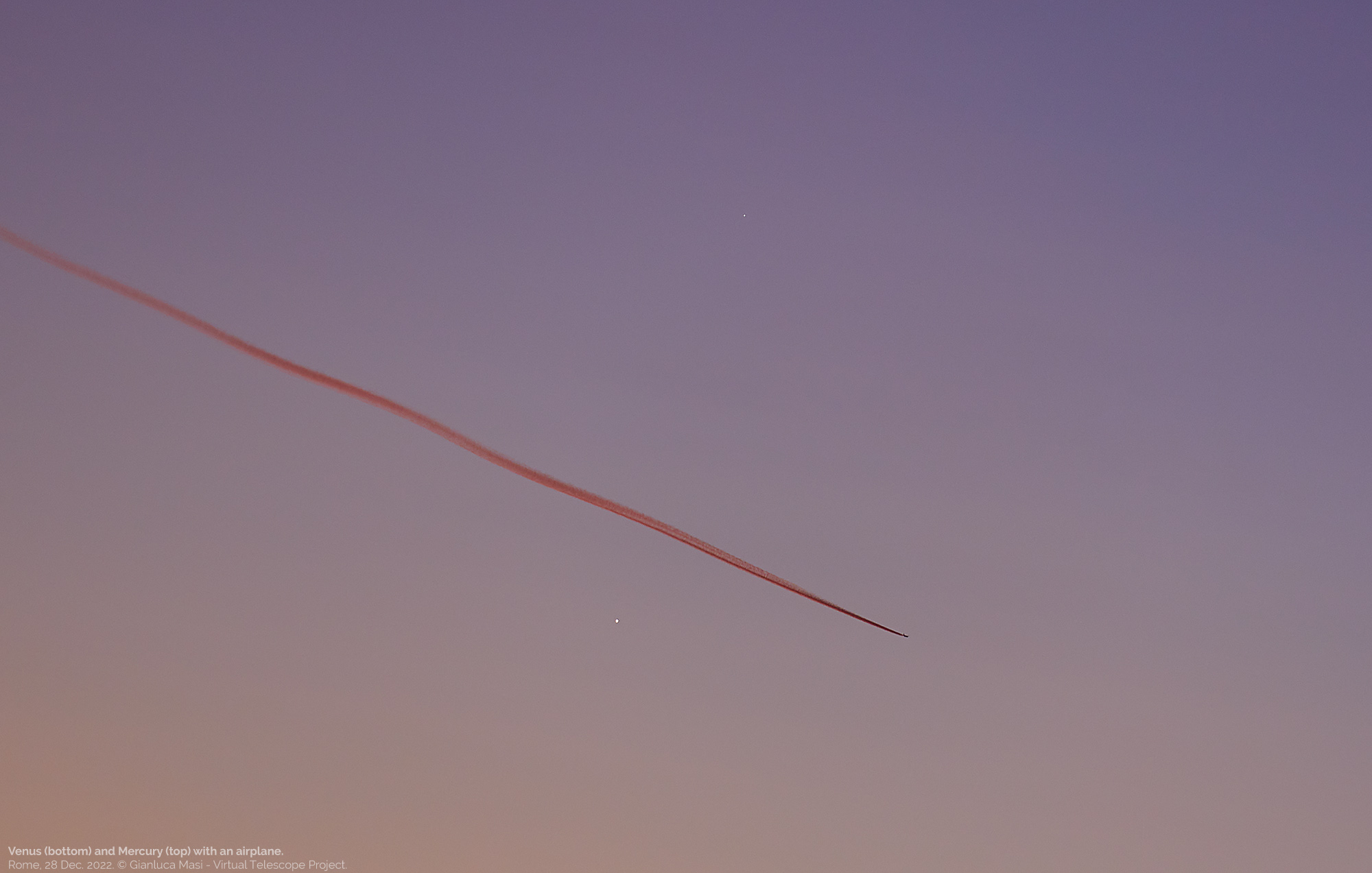
Venus (bottom) and Mercury with the streak of a plane going in between them.
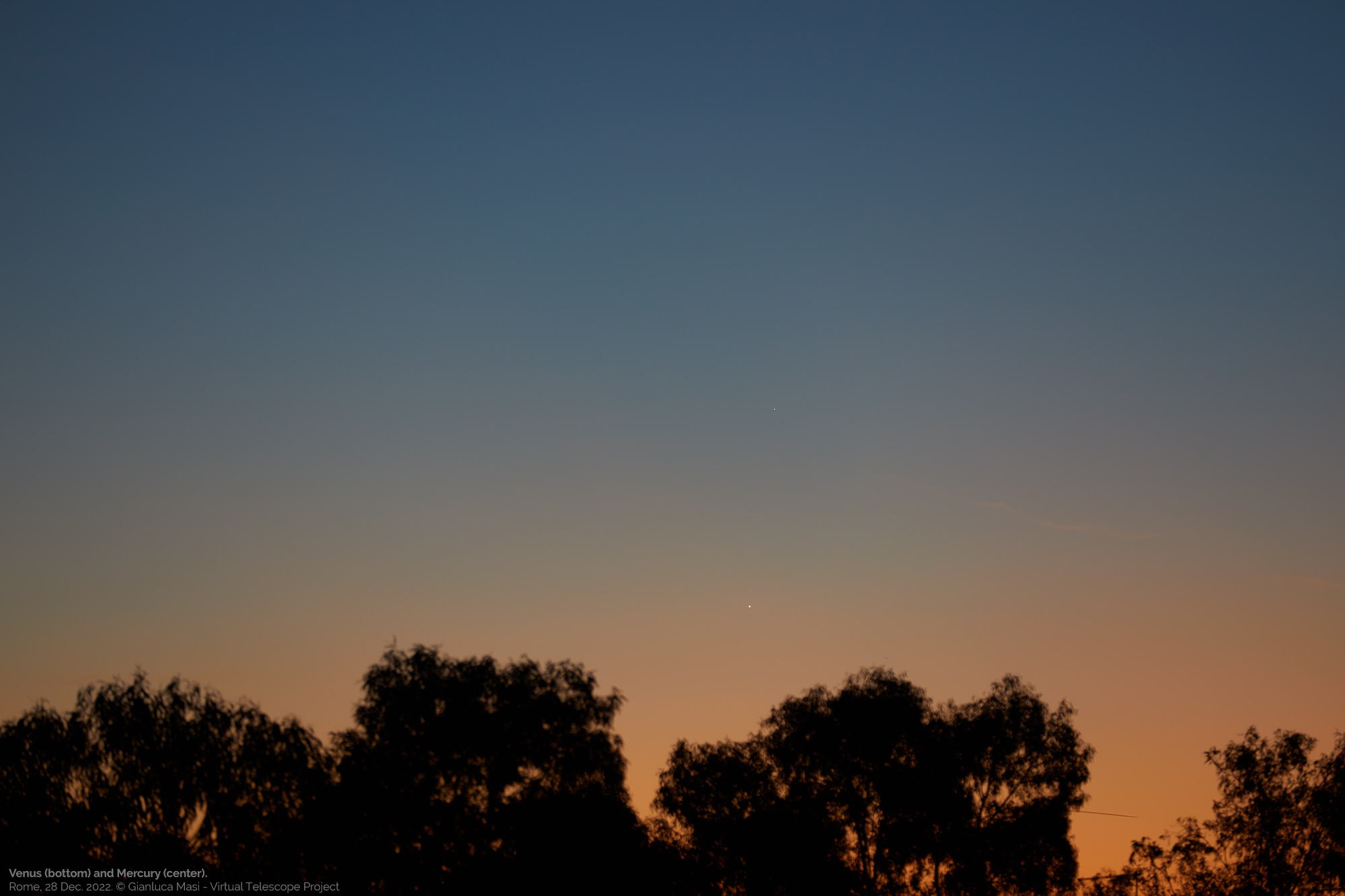
Visible just above the trees here is Venus, while Mercury is barely visible in the twilight above Venus.
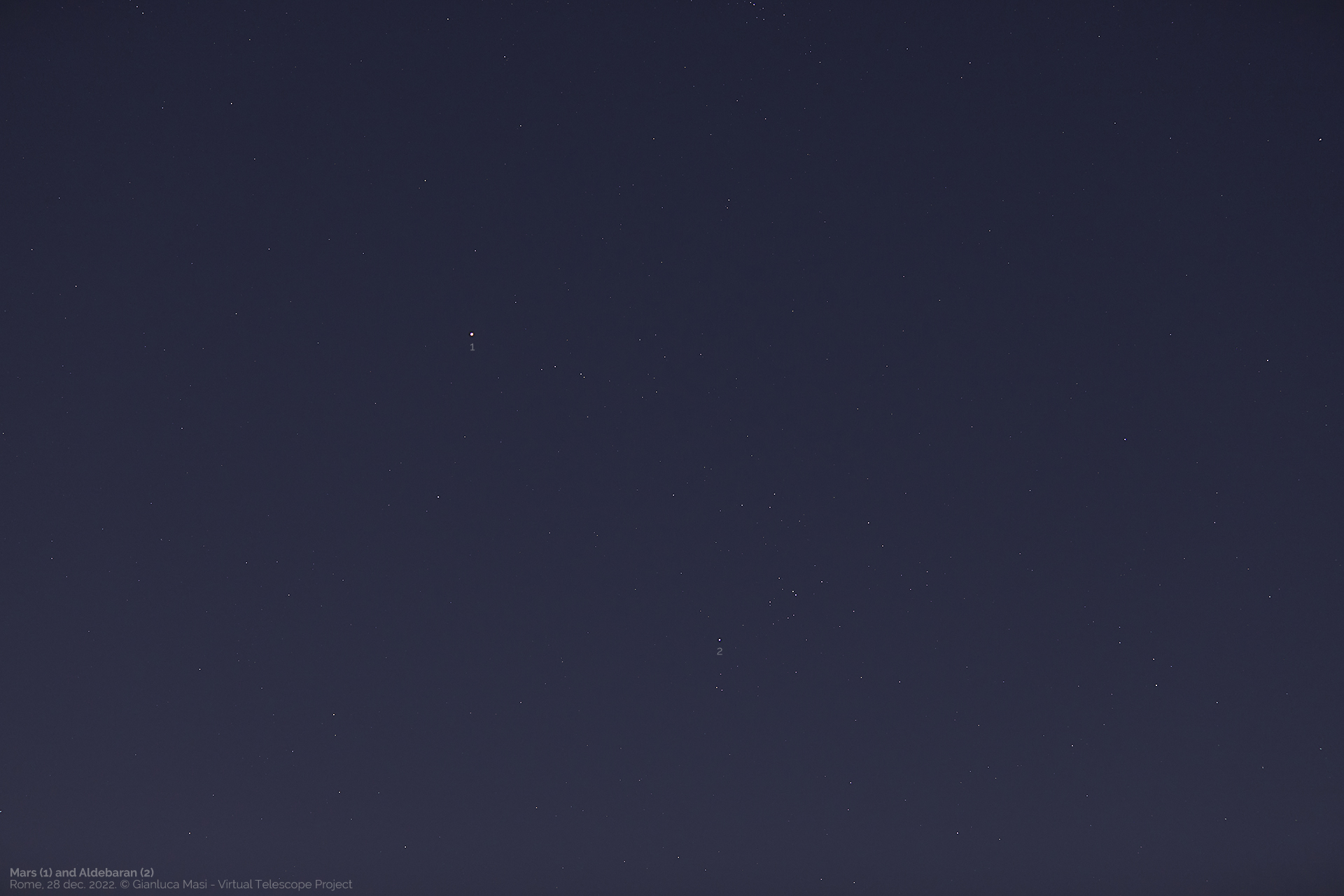
Saturn (center) with the stars Nashira (1) and Deneb Algedi (2) in the constellation Capricorn.
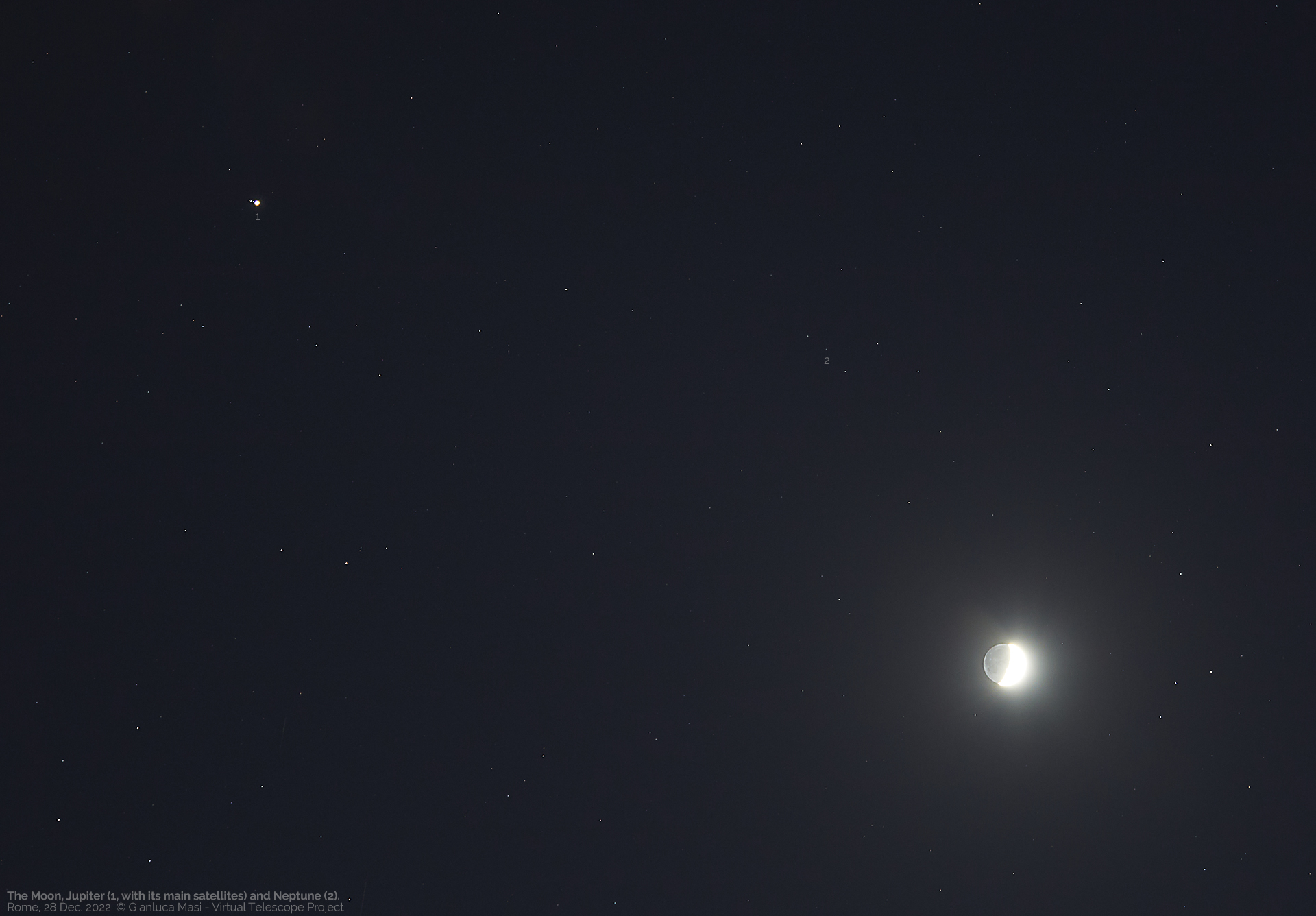
The moon (bottom right) with Jupiter (1, along with moons) and Neptune (2).
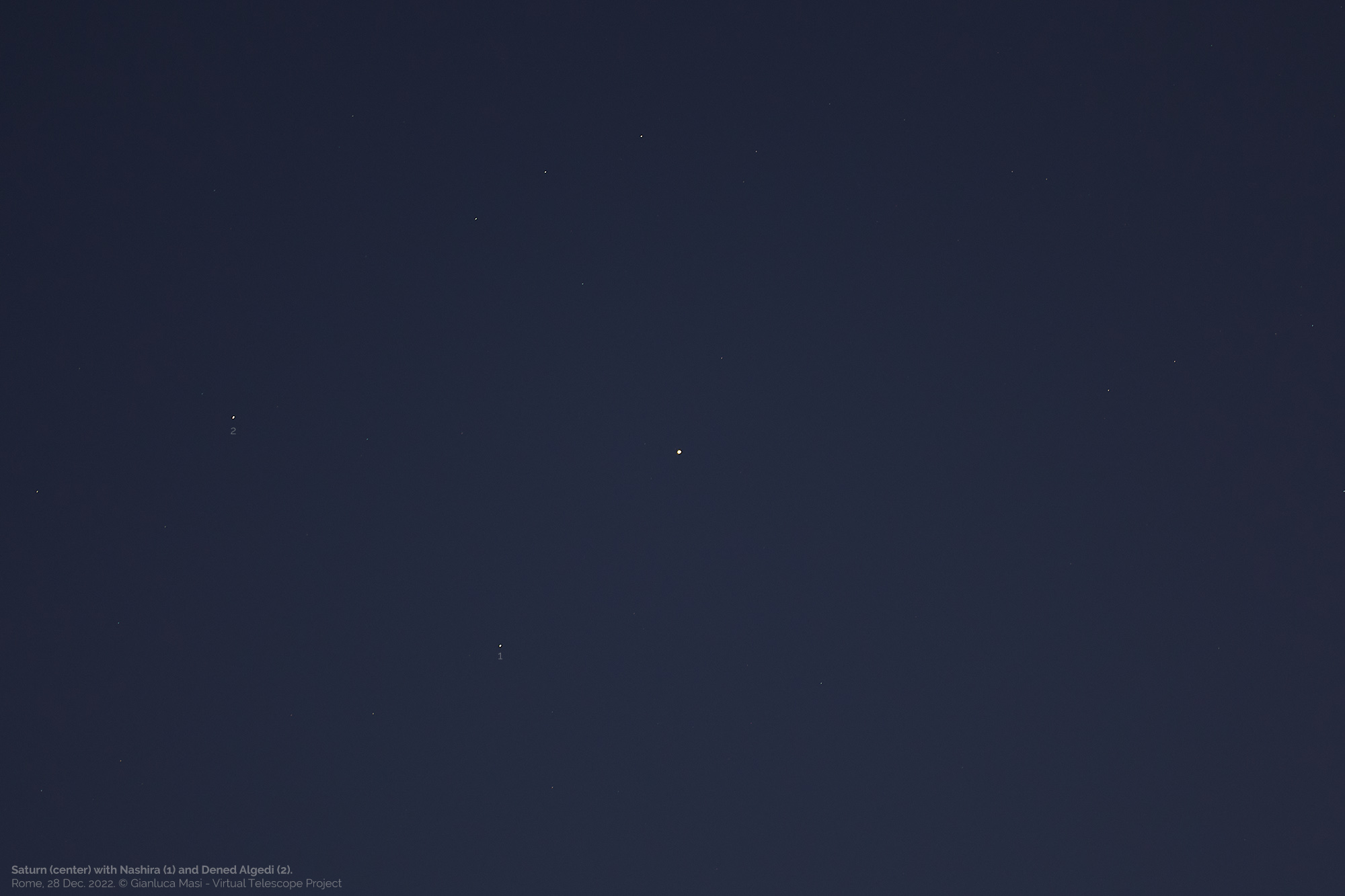
Mars (1) and the brightest star in Taurus, called Aldebaran (2).
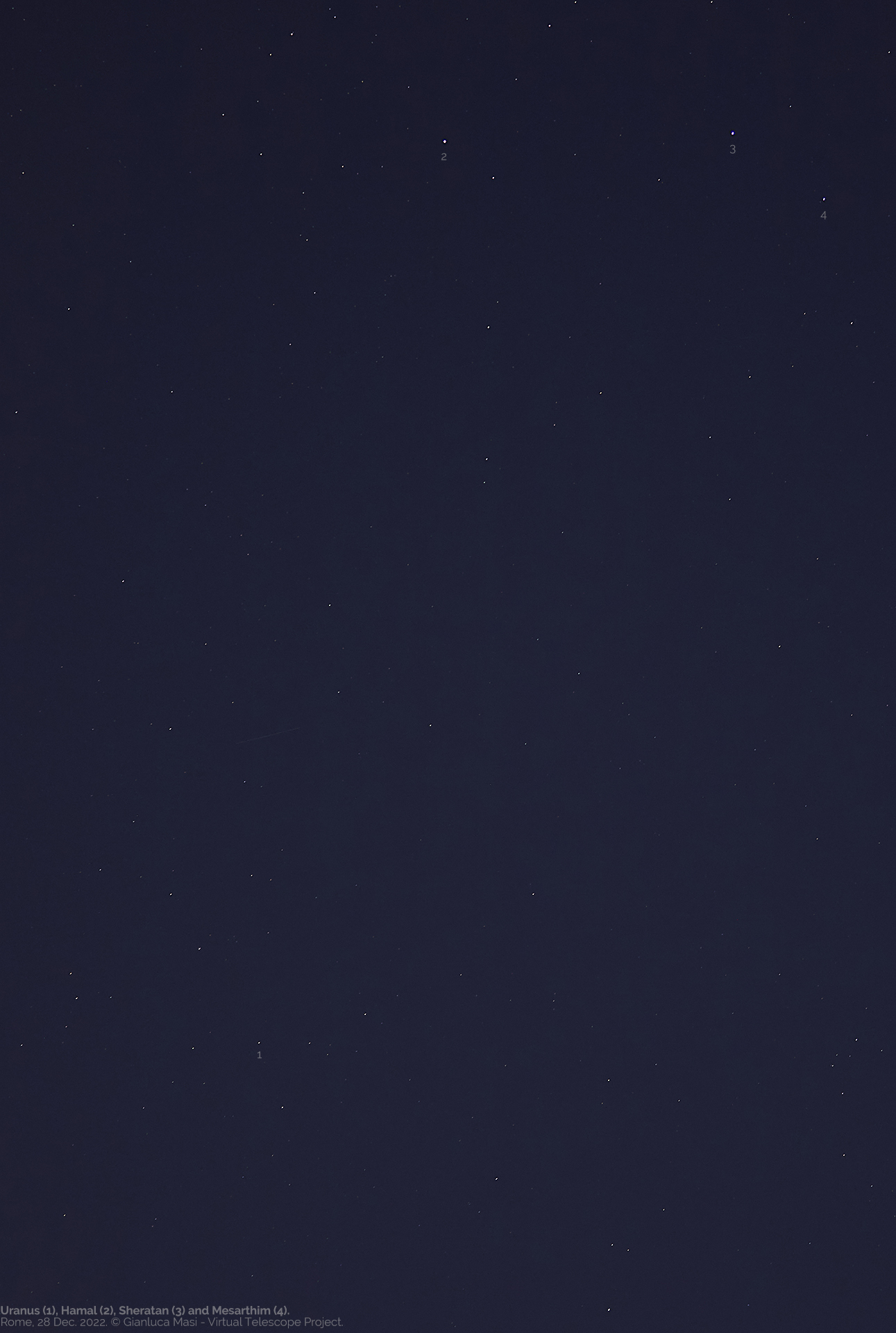
Uranus (1) along with three stars: Hamal (2), Sheratan (3) and Mesarthim (4).

Want to get a better look at the planets or the moon? We recommend the Celestron Astro Fi 102as the top pick in our best beginner's telescope guide. Don't forget a moon filter if you'll be looking towards our celestial companion.
"A very beautiful Christmas present from the sky," Masi wrote of the celestial sight. "I managed to capture some great images and share the view with the world."
If you're looking for binoculars or a telescope to see the solar system planets, our guides for the best binoculars and the best telescopes have options that can help. If you need photography gear, consider our best cameras for astrophotography and best lenses for astrophotography to prepare for the next planet sight.
Masi caught the five planets in a single view using a panoramic "fish-eye" lens, which gives a 180-degree field of view of the sky. He also set up several zoom lenses on a telescope mounted on the roof of his house in Rome.
Fleeting Mercury was the greatest challenge as it is fast fading from view in a bright twilight sky, but Masi managed to just capture it in the fish-eye lens. Zooming was easier, he said, "as I could select the best camera/lens settings for each planet."
Masi captured Venus and Mercury together, "showing in such a colorful sky just above the S-W (southwest) horizon." Then he proceeded through the sky, capturing each of the planets in turn and even imaging the remaining two only visible in telescope or high-powered binoculars: Uranus and Neptune. You can see the entire "parade" in the gallery above.
Get the Space.com Newsletter
Breaking space news, the latest updates on rocket launches, skywatching events and more!
"I'm already looking forward to the next cosmic show to bring to our community," Masi said; his next broadcast will be previewing the Quadrantid meteor shower that peaks on Jan. 4, unfortunately during a very bright and nearly full moon. But if you miss it, there will be other meteor showers in 2023 sure to produce amazing shooting stars.
Elizabeth Howell is the co-author of "Why Am I Taller?" (ECW Press, 2022; with Canadian astronaut Dave Williams), a book about space medicine. Follow her on Twitter @howellspace. Follow us on Twitter @Spacedotcom or Facebook.
Join our Space Forums to keep talking space on the latest missions, night sky and more! And if you have a news tip, correction or comment, let us know at: community@space.com.

Elizabeth Howell (she/her), Ph.D., was a staff writer in the spaceflight channel between 2022 and 2024 specializing in Canadian space news. She was contributing writer for Space.com for 10 years from 2012 to 2024. Elizabeth's reporting includes multiple exclusives with the White House, leading world coverage about a lost-and-found space tomato on the International Space Station, witnessing five human spaceflight launches on two continents, flying parabolic, working inside a spacesuit, and participating in a simulated Mars mission. Her latest book, "Why Am I Taller?" (ECW Press, 2022) is co-written with astronaut Dave Williams.
